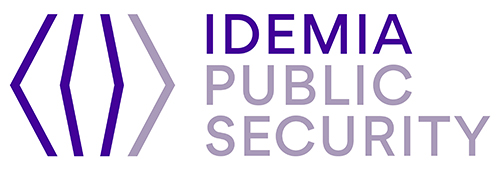Tackling the Complex Challenges of Land and Sea Borders
How governments and organizations use innovative technologies and solutions to secure their land and sea borders by Nicolas Phan, Head of Market Development, IDEMIA Public Security

There are many complex operational challenges when securing land and sea borders. This is primarily due to the diverse categories of travelers, crossing either in a group or independently, as well as the various modalities used to cross borders (cars, motorcycles, trucks, cruise ships, ferries, cargo ships, etc.).
Managing this requires a combination of solutions, ranging from eGates to smartphone-based that must function in varied lighting, climate, and landscape conditions. They should also seamlessly integrate with current systems and services and provide the flexibility to comply and adapt to changing needs.
These varying characteristics and challenges are why governments and private entities understand that a one-size-fits-all approach is impossible. As such, they are turning to innovative solutions and technologies to manage their land and sea borders.
Person-centric border security management
To securely clear travelers at border-crossing points, it is instrumental to implement a comprehensive, end-to-end solution adapted to the unique requirements of land and sea checkpoints. The solution must ensure a speedy clearance experience for travelers of varying profiles and modes of transport while also providing the highest level of security.
An example that illustrates the changing requirements for land and sea borders is the European Union’s implementation of the new border management initiative, the Entry/Exit System (EES), set to start later this year.
With the EU-EES, third-country nationals (TCNs) entering the Schengen Area for the first time will have their face and fingerprints captured and enrolled to create a new, secure European biometric database. This data will be used to perform clearance checks of TCNs entering or exiting the Schengen Area.
By deploying a person-centric approach, this new initiative has the potential to prevent illegal border crossings and modernize border management. The traditional document-centric approach is being replaced with one that empowers border guards to make decisions based on a traveler’s trusted identity. This transformation of border control is possible only through the utilization of robust multibiometric technologies integrated into an end-to-end border management solution. A person-centric approach should also rely on assessing the profile of each traveler. Through a risk analysis system, border authorities can leverage travelers’ data to identify suspicious profiles and proceed accordingly.
An innovative and versatile approach to border management
Successfully developing and implementing a fully integrated solution requires a deep understanding of the government’s and border’s unique requirements. Today, IDEMIA Public Security harnesses leading-edge technologies and field experience to secure a wide range of land and sea borders.
- Within the framework of the European EES, nine Member States entrust IDEMIA Public Security to ensure regulation compliance and enhance the security of their borders including land and sea locations. To secure the border-crossing process, Member States are deploying IDEMIA Public Security’s solutions that include equipping traditional manual counters to pre-clearance kiosks, ABC gates, tablets, mobile suitcases, smartphone Software Development Kits (SDKs), and management systems.
- In the Middle East, IDEMIA Public Security is working on a border clearance proof-of-concept that automatically registers and clears passengers as they remain inside their cars.
- Working alongside the Singapore Immigration & Checkpoints Authority (ICA), IDEMIA Public Security installed biometric kiosks at the Woodlands Train Checkpoint (WTCP). Using a cluster of kiosks that scan passports and capture biometric data in 24 seconds, the ICA can save space, process more than 10,000 entering/exiting travelers daily, and redeploy officers to areas requiring workforce support. All while ensuring a pleasant experience for tourists as well as commuters crossing between Singapore and Malaysia by train or bus.
- Securing sea and land borders extends to private entities responsible for ensuring compliance with government regulations while providing an enjoyable experience for their customers. The implementation of IDEMIA Public Security’s portable face-capturing system has helped the Royal Caribbean Cruise Line to cut processing time by threefold. Achieving peak performance, the system processes 720 passengers per hour, resulting in reduction of staffing resources from eight to just two guards per boat, accommodating up to 4500 passengers.
Governments and organizations rely increasingly on technology to secure land and sea borders while facilitating passage of bona fide travelers. This is why system providers must offer robust, reliable, and tailored solutions that can scale and evolve over time.
Extending Advance Passenger Information (API) and Passenger Name Record (PNR) solutions to land and sea borders, along with the emergence of the Digital Travel Credential and other newer solutions and technologies, will gain momentum in the years to come. This will require an ever-increasing need for scalable border management systems.




